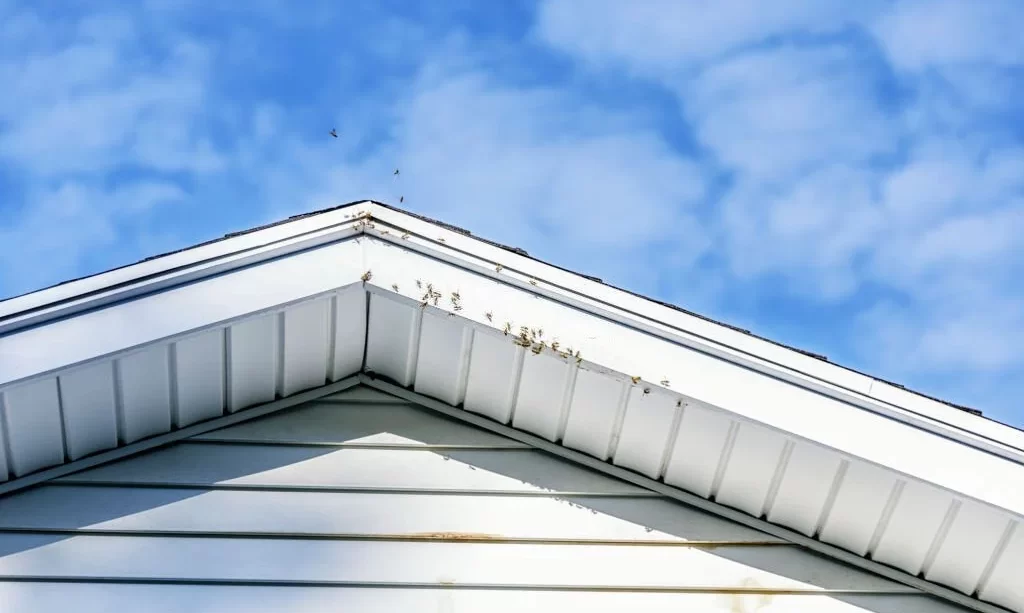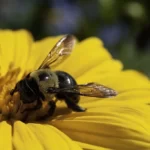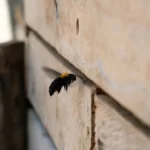Discovering bees nesting in your home’s siding can be both concerning and challenging. Bees play a vital role in pollination and ecosystem health, so it’s essential to address the issue with care and responsibility. This guide aims to provide you with a step-by-step approach to safely and effectively remove bees from your siding while preserving the well-being of these important pollinators.
- Powerful solution for eliminating bees, wasps, yellow jackets, and other pests in wall voids and in-ground nests.
- Easy-to-use dust formulation for convenient application near the entrance points of pests.
- Effective in killing pests as they track and spread the dust within their nests.
- Safe to use around flowers, brushes, shrubs, and lawns without causing harm.
- Trusted by both beekeepers and professional exterminators across the United States.
Identifying the Bee Species
The first step in addressing a bee infestation in your siding is to identify the bee species present. Different bee species have distinct behaviors, and it’s essential to know which type you’re dealing with. Here are some common bee species that may nest in siding:
- Honey Bees: Honey bees are social insects known for their organized colonies. They tend to build wax combs within cavities, such as wall voids or siding gaps. Honey bees are typically smaller, ranging from half an inch to three-quarters of an inch in length. Identifying honey bees is crucial, as they are valuable pollinators and often protected by law.
- Bumblebees: Bumblebees are robust, fuzzy insects that are larger than honey bees. They tend to nest in loose, fluffy materials, such as insulation or unused birdhouses. Bumblebees are generally less aggressive than honey bees and are essential pollinators for many plants.
- Carpenter Bees: Carpenter bees are solitary insects known for drilling holes in wood. They create perfectly round entry holes and may nest in wooden siding or eaves. Carpenter bees can resemble bumblebees but have a shiny abdomen, while bumblebees have a fuzzy one. Identifying carpenter bees is crucial for addressing potential structural damage.
Identifying the bee species correctly is essential because it influences the removal method and your approach to dealing with them. It’s also worth noting that bees, especially honey bees and bumblebees, are vital for pollinating plants and crops, making their preservation a significant concern. Proceeding with care and consideration for these pollinators is essential as we move forward in addressing the bee infestation in your siding.
Assessing the Bee Nest
Once you’ve identified the bee species infesting your siding, the next step is to assess the bee nest. This evaluation will help you understand the scope of the problem and plan your removal strategy effectively.
- Location and Accessibility: Determine where the bee nest is located within your siding. Is it near a window, door, or other entry points? Assess how accessible the nest is and whether it poses any immediate threats to residents or structures.
- Size of the Nest: Estimate the size of the bee nest. Bee colonies can range from a few dozen individuals to several thousand bees. Understanding the nest’s size will help you decide whether you can address the issue on your own or need professional assistance.
- Bee Behavior: Observe the behavior of the bees around the nest. Are they aggressive and defensive, or are they relatively calm and non-threatening? Aggressive behavior may indicate a more significant threat and the need for professional help.
- Structural Damage: Examine your siding for any signs of structural damage caused by the bees. Carpenter bees, in particular, can tunnel into wood, potentially compromising the integrity of your home. Note any visible holes or damage.
Choosing a Removal Method
After assessing the bee nest, you’ll need to choose an appropriate removal method. Consider the following factors when making your decision:
- Bee Conservation: Prioritize bee conservation by opting for removal methods that minimize harm to the bees. Whenever possible, relocation or non-lethal methods should be considered.
- Safety: Ensure the safety of yourself and others. If the bee nest is large, aggressive, or poses a significant threat, it may be best to seek professional assistance to avoid potential stings and injuries.
- Laws and Regulations: Be aware of local laws and regulations regarding the removal of certain bee species, especially honey bees. Some species are protected, and their removal may require specific permits.
DIY Bee Removal Steps
If you decide to handle the bee removal on your own, follow these steps carefully:
- Safety Gear: Wear protective clothing, including a beekeeping suit or long-sleeved clothing, gloves, and a veil or hat to shield your face.
- Nighttime Removal: Conduct the removal during the evening or night when bees are less active and inside the nest. Use a flashlight with a red filter to minimize disruption.
- Seal Off Entry Points: Before removing the nest, seal off any nearby entry points to prevent bees from re-entering your siding.
- Slow and Steady: Approach the nest calmly and slowly. Use a beekeeper’s smoker, if available, to calm the bees further.
- Gentle Removal: Carefully remove the nest or colony using a bee vacuum or a specialized bee removal trap, if possible. Follow humane methods for relocating the bees to a suitable location.
- Sealing the Siding: After removal, seal the entry points in your siding to prevent future infestations.
Remember that bee removal can be risky, and if you’re uncertain or uncomfortable with the process, it’s advisable to seek professional assistance. Bee conservation and safety should always be top priorities during the removal process.
Professional Bee Removal
In some cases, professional bee removal services may be the safest and most effective option. Here’s what you need to know about seeking professional assistance:
- When to Call Professionals: Consider professional bee removal when dealing with large bee colonies, aggressive bee species, or situations where safety is a concern. Professionals have the experience and equipment to handle these challenging scenarios.
- Choosing a Reputable Service: Research and select a reputable pest control or bee removal service in your area. Look for professionals experienced in bee removal, and check for licenses and certifications.
- Humane Removal: Ensure that the chosen service follows humane bee removal practices whenever possible. Many professional beekeepers and removal experts prioritize relocating bees to safe environments.
Preventing Future Bee Infestations
Preventing future bee infestations in your siding is crucial for both your home’s integrity and bee conservation efforts. Consider the following preventive measures:
- Seal Entry Points: Inspect your siding and seal any potential entry points with caulk or sealant. Bees often exploit small openings, so sealing cracks and gaps can deter them.
- Regular Maintenance: Conduct routine inspections of your home’s exterior, including siding, roof eaves, and soffits. Promptly address any damage or openings where bees might nest.
- Install Screens: Install bee-proof screens or wire mesh over vents and openings to prevent bees from entering while still allowing proper ventilation.
- Landscaping: Avoid planting flowering plants close to your siding, as this can attract bees. Consider relocating bee-attracting plants further away from your home.
- Consult a Beekeeper: If you’re uncertain about bee-friendly landscaping or have concerns about potential bee habitats, consult with a local beekeeper or expert for guidance.
Conclusion
Addressing a bee infestation in your siding requires a careful balance between bee conservation and safeguarding your home. By identifying the bee species, assessing the nest, and choosing the right removal method, you can safely and responsibly address the issue. Whether you opt for DIY removal, professional assistance, or preventive measures, remember that bees play a vital role in our ecosystem, and their preservation is essential.
Taking steps to prevent future infestations not only protects your home but also supports bee populations and helps maintain a healthy environment. Bee removal should always be approached with respect for these valuable pollinators, ensuring that their well-being is considered alongside your own.





